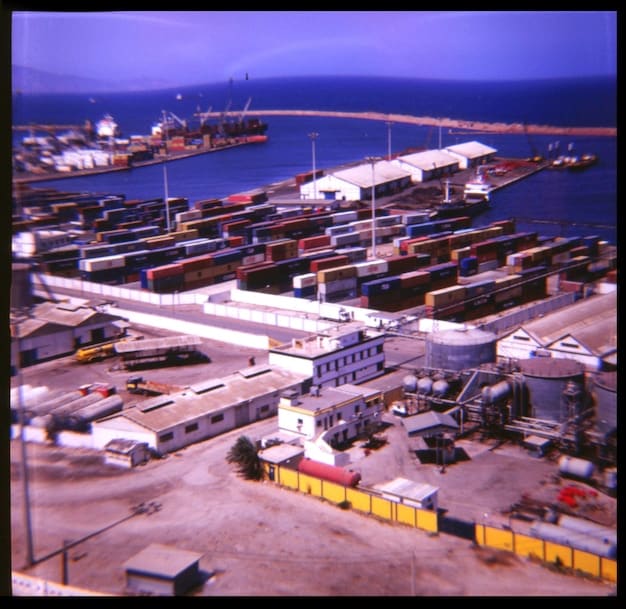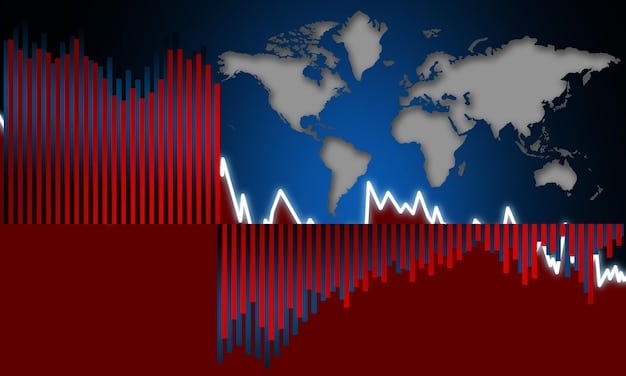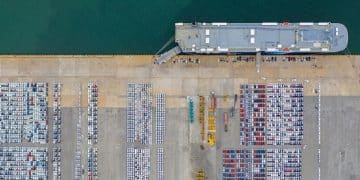Navigating New US Trade Policies: A Guide for Import/Export Businesses

Recent updates in US trade policies significantly impact import/export businesses, requiring them to adapt to changes in tariffs, agreements, and regulations to maintain competitiveness and compliance.
The landscape of international trade is constantly evolving, and recent updates: understanding the impact of new US trade policies on import/export businesses is now more crucial than ever. These policy shifts can create both challenges and opportunities for businesses operating in the US market, demanding a proactive approach to understanding and adapting.
Decoding Recent US Trade Policy Changes
US trade policy has undergone several changes in recent years, driven by factors such as economic nationalism, geopolitical tensions, and the desire to reshape global trade relationships. These changes have far-reaching implications for businesses involved in international trade.
Key Trade Agreements and Negotiations
The US participates in numerous trade agreements, both bilateral and multilateral, which dictate the terms of trade with various countries. Recent negotiations and modifications to these agreements can significantly affect import and export activities.
Tariffs and Trade Restrictions
Tariffs are taxes imposed on imported goods, and they can have a substantial impact on the cost of goods and the competitiveness of businesses. The US has implemented tariffs on a range of products from various countries, leading to retaliatory measures and trade disputes.

Here are some key elements to consider:
- USMCA (United States-Mexico-Canada Agreement): Replacing NAFTA, USMCA introduces new rules on labor, intellectual property, and automotive trade.
- Section 232 Tariffs: These tariffs, imposed on steel and aluminum imports, aim to protect domestic industries but have increased costs for businesses using these materials.
- Trade Relations with China: Ongoing trade tensions between the US and China have resulted in tariffs on billions of dollars’ worth of goods, impacting supply chains and consumer prices.
Understanding these changes and their potential effects is essential for import/export businesses to make informed decisions.
Impact on Import Businesses
Import businesses face multiple challenges and opportunities as a result of recent US trade policies. Changes in tariffs, regulations, and trade agreements can affect sourcing strategies, pricing, and overall competitiveness.
Increased Costs and Pricing Strategies
Tariffs increase the cost of imported goods, which can lead to higher prices for consumers and reduced demand. Import businesses must find ways to mitigate these costs, such as diversifying their supplier base or negotiating better deals with existing suppliers.
Supply Chain Disruptions
Trade disputes and restrictions can disrupt supply chains, making it difficult for businesses to obtain the goods they need. It is crucial to have contingency plans in place to address potential supply chain disruptions.
Strategies to navigate the challenges include:
- Diversifying Sourcing: Explore alternative suppliers in countries not subject to high tariffs.
- Optimizing Logistics: Streamline transportation and warehousing to reduce costs.
- Renegotiating Contracts: Work with suppliers to adjust pricing and terms.
Adaptation and flexibility are key to surviving and thriving in the face of new trade policies.
Impact on Export Businesses
Export businesses also face new challenges and opportunities due to recent US trade policies. Changes in trade agreements, tariffs, and other regulations can affect their ability to compete in global markets.
Market Access and Competitiveness
Trade agreements can provide preferential access to foreign markets, giving US export businesses a competitive advantage. However, changes in these agreements or the imposition of tariffs can limit market access and reduce competitiveness.
Retaliatory Measures and Trade Disputes
When the US imposes tariffs on imported goods, other countries may retaliate with tariffs on US exports. This can make it more difficult for US businesses to sell their products abroad.

Key strategies for export businesses include:
- Exploring New Markets: Identify and penetrate new markets to reduce reliance on existing ones.
- Adapting Products: Modify products to meet the specific requirements of different markets.
- Leveraging Government Support: Utilize export promotion programs and financial assistance offered by government agencies.
By proactively addressing these challenges, export businesses can maintain and expand their global presence.
Strategies for Adapting to New Trade Policies
Adapting to new trade policies requires a comprehensive approach that includes understanding the changes, assessing the potential impact on your business, and implementing strategies to mitigate risks and capitalize on opportunities.
Risk Assessment and Mitigation
Conduct a thorough risk assessment to identify potential vulnerabilities in your supply chain, pricing, and market access. Develop mitigation strategies to address these risks, such as diversifying your supplier base or hedging against currency fluctuations.
Supply Chain Optimization
Optimize your supply chain to reduce costs and improve efficiency. This may involve consolidating shipments, negotiating better rates with logistics providers, or using technology to track and manage your inventory.
Whether you export or import, consider these steps:
- Stay Informed: Regularly monitor trade policy developments and industry news.
- Seek Expert Advice: Consult with trade lawyers, consultants, and industry associations.
- Invest in Technology: Implement software solutions to manage compliance and streamline operations.
Proactive adaptation is crucial for navigating the complexities of new trade policies.
The Role of Technology in Navigating Trade Policy
Technology plays a critical role in helping businesses navigate the complexities of new trade policies. Software solutions and online platforms can automate compliance tasks, streamline operations, and provide valuable insights into trade data.
Compliance Automation
Compliance with trade regulations can be time-consuming and complex. Technology can automate many of these tasks, such as tariff classification, customs documentation, and export licensing.
Data Analytics and Market Insights
Data analytics tools can provide valuable insights into trade data, helping businesses identify trends, assess risks, and make informed decisions. These tools can also help businesses monitor competitor activity and identify new market opportunities.
Consider the following:
- Trade Management Software: Automates compliance, streamlines documentation, and provides real-time visibility into trade operations.
- Data Analytics Platforms: Offers insights into market trends, competitor activity, and potential risks.
- E-commerce Platforms: Facilitates international sales and simplifies cross-border transactions.
By leveraging technology, businesses can improve efficiency, reduce costs, and gain a competitive edge.
Future Trends in US Trade Policy
Looking ahead, several trends are likely to shape the future of US trade policy. These include the ongoing impact of geopolitical tensions, the rise of protectionism, and the increasing importance of digital trade.
Geopolitical Influences
Geopolitical tensions, such as those between the US and China, are likely to continue to influence trade policy. Businesses need to monitor these developments and be prepared to adapt to changing trade relationships.
Digital Trade and E-commerce
E-commerce and digital trade are becoming increasingly important, and governments are grappling with how to regulate these activities. Businesses need to stay informed about new regulations and be prepared to comply with them.
Key trends to watch include:
- Increased Focus on National Security: Trade policies may increasingly be used to advance national security interests.
- Greater Emphasis on Digital Trade: Regulations governing e-commerce and cross-border data flows will likely evolve.
- Continued Trade Disputes: Trade tensions and disputes are likely to persist, requiring businesses to remain agile and adaptable.
Staying informed and proactive is essential for navigating the future of US trade policy.
| Key Point | Brief Description |
|---|---|
| ⚠️ Tariff Changes | Updated tariffs impact costs and competitiveness for businesses. |
| 🌐 Supply Chain | Trade policies can disrupt supply chains, requiring diversified sourcing. |
| 📈 Market Access | New trade agreements can either expand or limit access to global markets. |
| 💻 Technology | Technology helps automate compliance and provide trade data insights. |
Frequently Asked Questions
▼
Tariffs increase the cost of imported goods, which can lead to higher prices for consumers and reduced demand. Companies must strategize to mitigate these costs.
▼
The USMCA (United States-Mexico-Canada Agreement) is a trade agreement that replaced NAFTA, introducing new rules on labor and intellectual property.
▼
Export businesses can adapt by exploring new markets, modifying products, and leveraging government support programs to maintain competitiveness.
▼
Diversifying supply chains helps mitigate risks associated with trade disputes, ensuring businesses can source goods from various countries and avoid disruptions.
▼
Technology automates compliance tasks, streamlines operations, and provides insights into trade data, improving efficiency and reducing the risk of errors.
Conclusion
Navigating the complexities of recent updates: understanding the impact of new US trade policies on import/export businesses requires a proactive and informed approach. By staying abreast of policy changes, assessing potential risks, and implementing adaptive strategies, businesses can mitigate challenges and capitalize on opportunities in the ever-evolving landscape of international trade.





